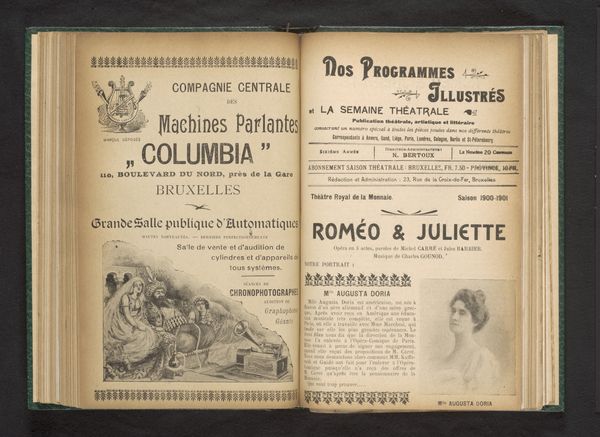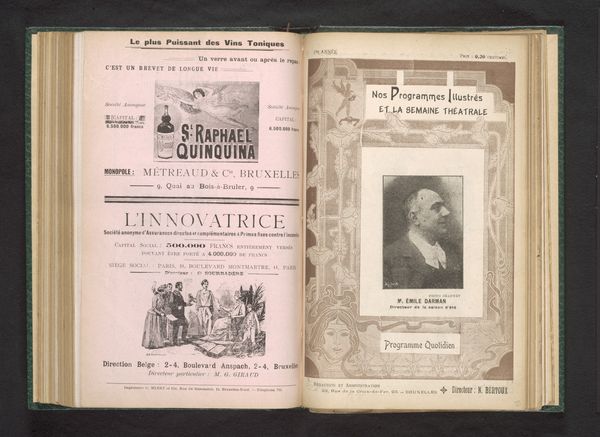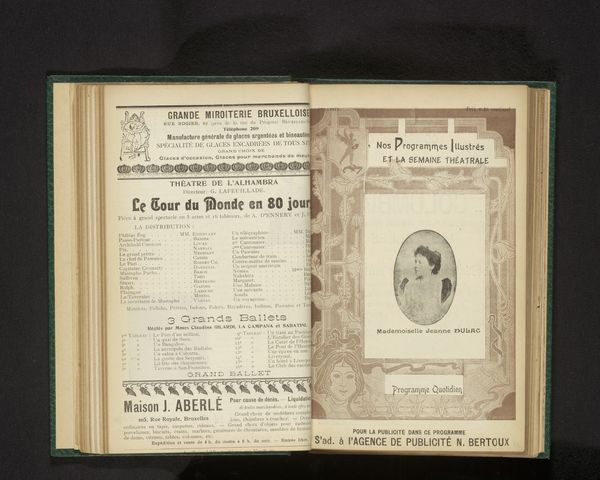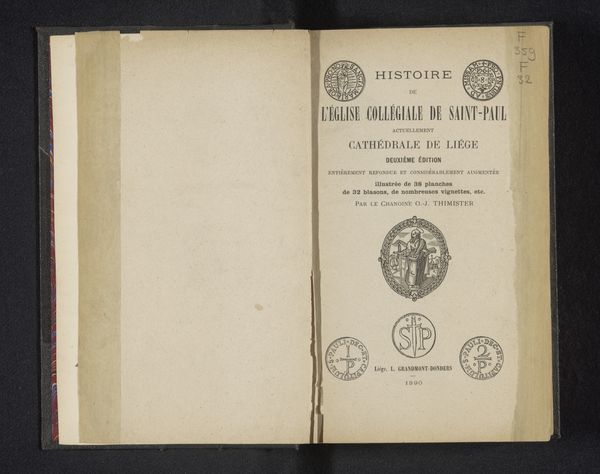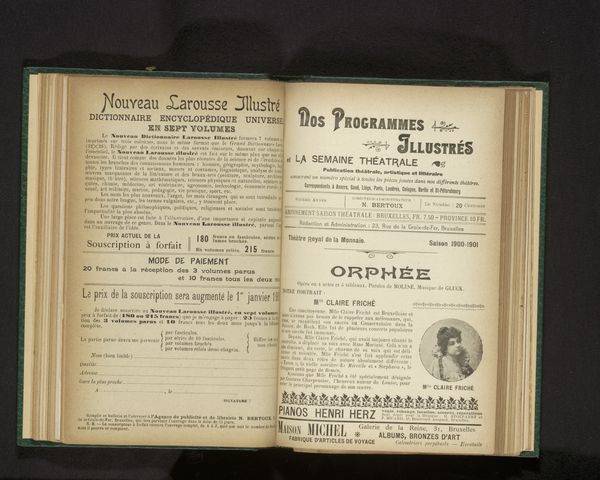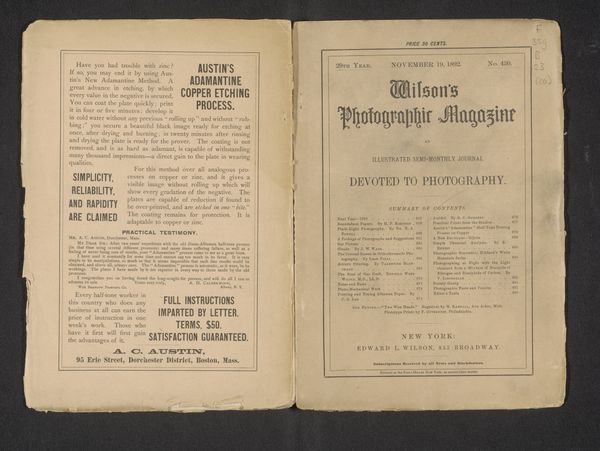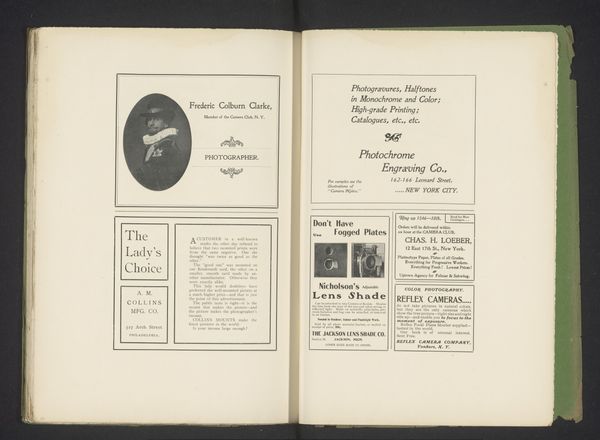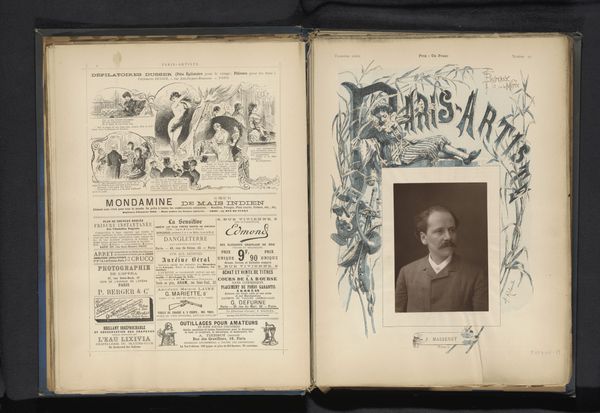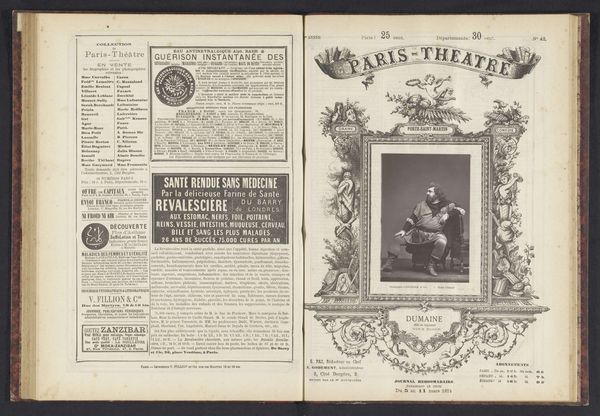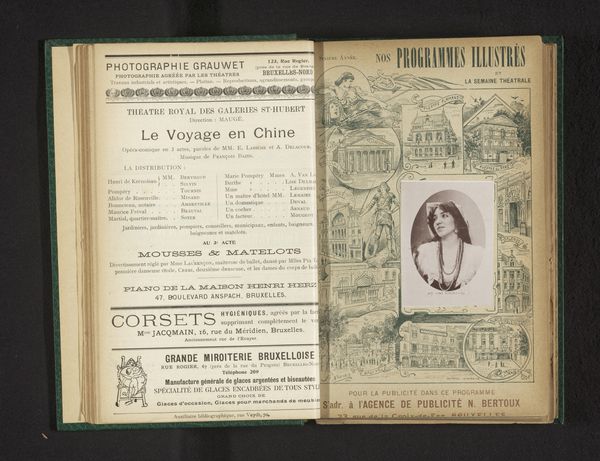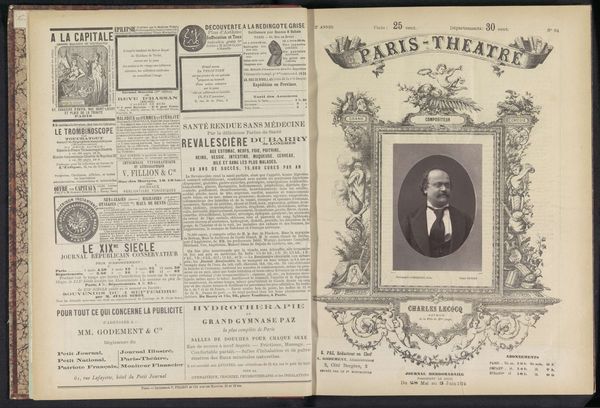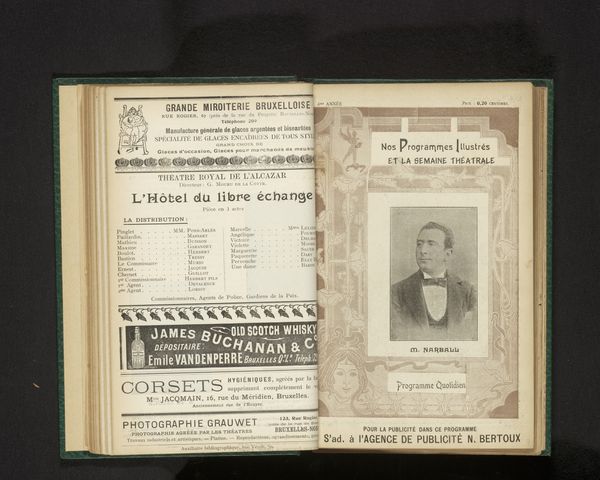
graphic-art, print, photography, poster
#
portrait
#
graphic-art
#
art-nouveau
# print
#
photography
#
poster
Dimensions: height 60 mm, width 50 mm
Copyright: Rijks Museum: Open Domain
Curator: The work before us, titled "Portret van Jules Lyon," is an image captured at some point before 1900 by Edouard Grauwet, a striking example of late 19th-century graphic art blending photography and print. Editor: It gives a very Belle Epoque impression, this open book; a charming snapshot of entertainment from the past. The symmetrical page design, framing these adverts, creates a balance, yet also an impression of commercialism. Curator: Absolutely. If you examine the visual vocabulary, the ornate lettering typical of Art Nouveau, for example, does elevate these commercial announcements, providing both style and distinction to these printed advertisements for "Machines Parlant 'Columbia'." Editor: It’s interesting how this is essentially marketing theatre—the phonograph promising to recreate drama. You've got this idealized depiction of theatergoers on one page opposite Jules Lyon’s very straightforward photographic portrait— the advertisement’s literal “face.” I imagine Lyon may have been involved with theatrical productions, maybe an impresario of sorts? Curator: He's listed here as the 'Administrateur general.' He most certainly would have held a role in organizing productions for that theatre, which might also include musical programs and early "talking machines". In that context, the 'art' here serves not as an autonomous entity, but instead, a tool shaped to advance entertainment industries of the era. Editor: I'm noticing the strategic use of photography mixed with these artistic styles; the figure’s face rooted in a 'real' person contrasted with stylized text and idealized scenes. The Columbia ad features a generic, theatrical-esque tableau to signal entertainment of all kinds, don't you think? Curator: Precisely. Grauwet has presented a carefully calculated composite. A portrait serves as the anchor while the text promises “the week’s theatre”. Ultimately, Lyon, the theater, the Columbia phonograph—they all merge into a broader social narrative regarding entertainment in fin-de-siècle Brussels. Editor: It’s wonderful how these layered contexts shape and give form to something that would’ve been initially considered a common advert, isn't it? A peek into history! Curator: I agree! Deconstructing its aesthetic strategies allows for a reading of how the artwork negotiates historical and economic circumstances.
Comments
No comments
Be the first to comment and join the conversation on the ultimate creative platform.

